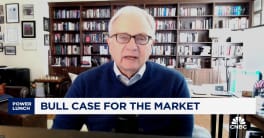As usual the two monthly reports on home sales - existing homes and newly constructed houses - were issued in lockstep on Wednesday and Thursday and while one was loudly proclaimed as an indicator that things were still getting worse, the second contained a germ of hope.
The National Association of Realtors (NAR) issued the results of its survey of sales of existing homes in October on Wednesday and the report was gruesome with sales showing the largest drop in month-to-month figures in eight years. October existing home sales including single family residences, town houses, condos, and coops were down 1.2 percent to a seasonally adjusted annual rate of 4.97 million units from the downwardly revised September figure of 5.03 million. The October figures are 20.7 percent below the 6.27 million units sold in September 2006. (We did double check and NAR was claiming, in this category, to cite September 2006 not October 2006 figures.)
On a regional basis, existing home sales in the Northeast and the South were
unchanged from September at 900,000 and 2.03 million respectively. When compared
to October 2006 figures, the Northeast was 2.6 percent lower and the South was
down 19.4 percent.
Sales in the Midwest were 1.7 percent below those in September and 16.9 percent
lower than October 2006. In the West sales were down 4.4 percent from September
and 33.1 percent from the level one year ago.
The national median existing price for all housing types was $207,800 last month, 5.1 percent lower than the $218,900 median one year ago. Prices in the various regions were down 6.7 percent in the South, 1.6 percent in the Midwest and 6.9 percent in the West but were up 1.3 percent in the Northeast.
The inventory of existing homes increased 1.9 percent to a total of 4.45 units available for sale; this is a 10.8 month supply at the current sales pace compared to 10.4 months in September.
Lawrence Yun, NAR chief economists pointed out that when many of the sales that closed in October were being negotiated the mortgage problems arising out of the sub prime situation were peaking. "We continue to see the biggest impact in high-cost markets that rely on jumbo loans. Mortgage availability has improved as evidenced by much lower mortgage interest rates and a sharp jump in FHA endorsements for home purchases.
"A trend away from sub prime mortgages to FHA loans, which often carry much lower interest rates, is a positive development for consumers and the housing market going forward. Still, it will take some time for the change to yield a measurably higher closed sales volume in the aftermath of the sub prime collapse. In the near term, we expect home sales to remain fairly stable."
Wall Street, in the midst of a 300 plus run-up in the Dow Jones on Wednesday seemed to take little notice of the NAR figures and perhaps that was prescient as, on Thursday, the Census Bureau and the U.S. Department of Housing and Urban Development released their report on sales of new houses for the month of October.
New home sales in October were at a seasonally adjusted annual rate of 728,000 units which was a 1.7 percent increase above the revised September figure of 716,000 units although it was 23.6 percent lower than the revised estimate of 952,000 for October 2006.
A 1.7 percent increase is hardly a rebound; however, there were some bright notes in the report. First of all, sales in all regions except the West were in positive territory relative to September with the long-suffering Midwest up 14.3 percent month-over-month. Three of the four regions were still wallowing well below October 2006 figures but the Northeast, which had begun its downturn before the other regions, was up 43.6 percent in terms of October 2007 vs. October 2006 sales.
Another positive sign was inventory. In September there was a 9.0 month supply of new homes for sale nationally, a figure that had dropped to 8.5 months in October.
Median prices continued to slip, from $238,400 in September to $217,800 in October but the average price was up from $290,200 to $305,800. These figures probably reflect the temporary problem with obtaining and closing jumbo loans that were encountered by buyers/borrowers earlier in the fall. One year ago the median and mean prices were $250,400 and $306,800 respectively.
**VIDEO(910)**






